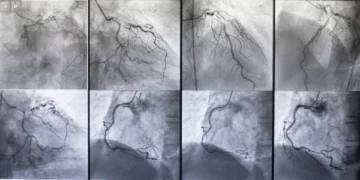A study by European researchers from the University of Glasgow has revealed new trends and ongoing challenges in heart health and cardiovascular disease (CVD) in the UK. A groundbreaking new study has shed light on how the landscape of heart disease has evolved in the UK over the past two decades

Published in the BMJ, the study analyzed the electronic health records of 22 million people from the Clinical Practice Research Datalink (CPRD) GOLD and Aurum databases.
CVD, affecting around seven million people in the UK, is a major cause of disability and death. Coronary heart disease, which affects about 2.3 million people, is the most common form of heart and circulatory disease. It occurs when fatty material builds up in the walls of the coronary arteries, narrowing them.


The study found a 19% reduction in the overall incidence of heart-related diseases over the past 20 years, including significant drops in heart attacks and strokes, with incidences falling by around 30% between 2000 and 2019.
Despite this overall decrease, the study highlights an increase in diagnoses of other heart conditions, such as irregular heartbeats, valve problems, and blood clots. It also reveals a significant disparity between the rich and poor: people in deprived areas are nearly twice as likely to suffer from certain heart conditions compared to those in wealthier areas.

The researchers noted that the overall burden of heart disease remains high due to the rising incidence of other health conditions. This leaves large segments of the population at risk, including young people and those living in economically disadvantaged areas. They suggest that more efforts are needed to better identify those at highest risk of developing CVD and how best to prevent it.
Dr. Conrad, honorary research fellow at the University of Glasgow and lead author of the study, commented: “Our findings suggest that existing efforts have been successful in preventing [CVD], yet that other CVD increased in parallel. We hope that these findings will help raise awareness to expand research and prevention efforts to include the broader spectrum of cardiovascular presentations and their consequences.
































Discussion about this post